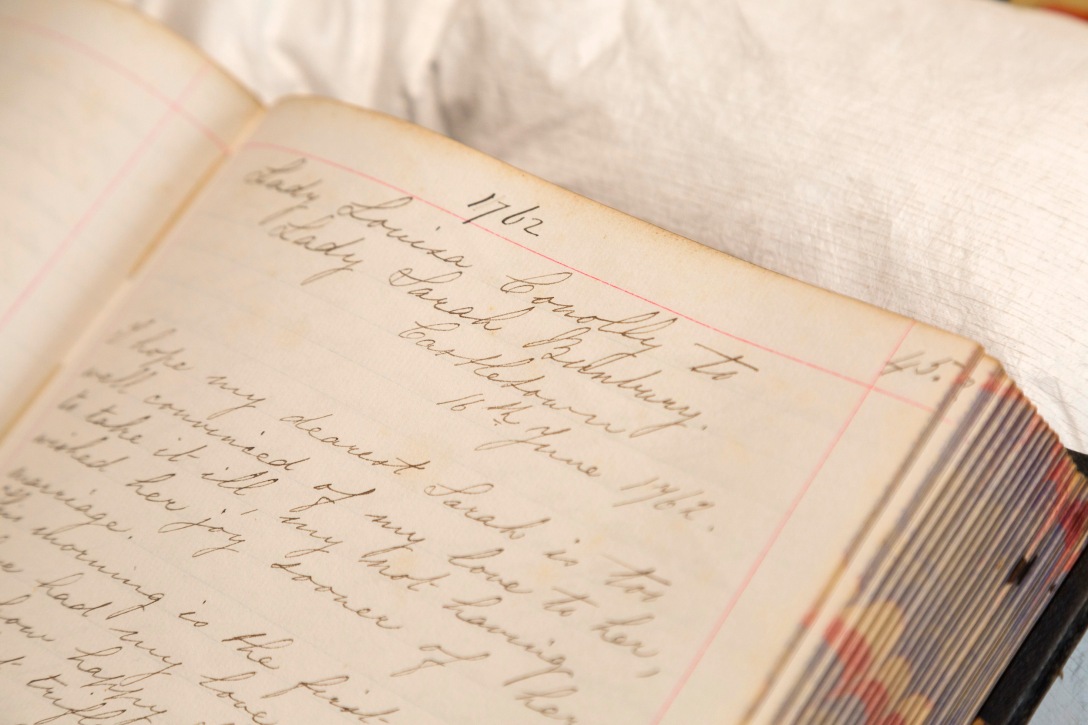By Nicola Kelly, Archivist, OPW-Maynooth University Archive and Research Centre
The habit of coffee drinking first became popular in Europe early in the 17th century and the first coffee house was opened in Oxford at The Angel in 1650. Over the next two hundred years coffee houses flourished in cities such as London, Paris and Vienna, acting as informal meeting places where information was exchanged through conversation and print.
According to a pamphlet, the ‘women’s petition against coffee’ of 1674, coffee made men ‘as unfruitful as the sandy deserts, from where that unhappy berry is said to be brought.’
Despite some of these objections, coffee houses blossomed, over 2,000 having been set up in London by 1700. Literary contemporaries described clergymen snug in coffee houses penning sermons; doctors used them for consultations. Dublin’s earliest coffee houses were opened in the late 17th century, and remained popular throughout the 18th century. The fashion also spread to county towns and in 1698, coffee houses were to be found throughout Ireland’s larger cities. Some coffee houses transformed into the gentlemen’s clubs that appeared in London, Paris and Dublin in the 17th century. These clubs originally met in coffee houses, then taverns, until later proprietary clubs became fashionable.
Coffee houses have long been linked with social and political change, in the era of Enlightenment were considered an alternative gathering place, and took over the role that taverns had long played. By offering a choice of drinks, and often sweets, at a fixed price and in a more civilized setting than most taverns provided, coffee houses and cafes were part of the rise of the modern restaurant.
Merchants whose businesses revolved around the Custom House frequented two of Dublin’s busiest coffee houses: The Little Dublin and The Exchange in Crampton Court. When the Royal Exchange (now City Hall) opened in 1779, it included a coffee room on the first floor. It extended ‘from one stair-case to the other, almost the whole length of the north front, and its breadth is from the front to the dome: In point of magnificence, it is perhaps equal to any coffee-room in Great Britain: It receives its lights by the windows in the north front, and by oval lanterns in the flat of the ceiling, which is highly ornamented, and from which is suspended a grand lustre’.
Although the majority of coffee houses appeared in Europe’s larger cities, among our collections, is a letter from the Conolly archive in which Lady Louisa Conolly refers to a Coffee Room at Castletown House, Celbridge, Co. Kildare. The letter is dated 19 January 1766, Lady Louisa in a letter to her sister Lady Sarah Lennox writes;
‘She has an aversion to a Coffee room, and thinks it so wicked a thing that our having one here shocks her prodigiously, and with the other circumstance of my not having children, she does not like me at all.’

This offers insights into the growth and popularity of the coffee trade in Ireland particularly among the landed gentry, however, it is unusual that one features in an estate like Castletown, commissioned by Lady Louisa, as conversation in coffee houses typically revolved around business and politics, serving as well springs of gossip, political intrigue and faction, and were thought improper places for women. Lady Louisa frequently discusses politics in letters to her sister Lady Sarah Lennox, she writes ‘alas, the bill for the Augmentation of Troops, was thrown out by four voices; – he interested himself very much for it, and spoke, but all would not do, so poor Ireland, will, I am afraid, go to the next French war!’, and observing also ‘you must know that I am a great Politician with regard to Ireland’ (8 May 1768). It could be speculated that Lady Louisa discussed such topics among intimate circles of friends in her coffee room!
The Conolly archive is available for consultation at the OPW-Maynooth University Archive and Research Centre
For further details about this collection please contact the Centre:
Email: omarc@mu.ie Telephone: 01-6544222
Further reading:
PP/CON2/2 Letters of Lady Louisa Conolly, Conolly Archive, OPW-Maynooth University Archive and Research Centre, Castletown House.
Pamphlet, ‘The women’s petition against coffee : representing to publick consideration the grand inconveniencies accruing to their sex from the excessive use of that drying, enfeebling liquor’ (London, 1674)
Robert Pool, John Cash, Views of the most remarkable public buildings, monuments and edifices in the city of Dublin, (Dublin, 1780)


Reblogged this on What is a letter?.
LikeLiked by 1 person
[…] Wat brieven ons leren over de 18e-eeuwse koffiecultuur. […]
LikeLike